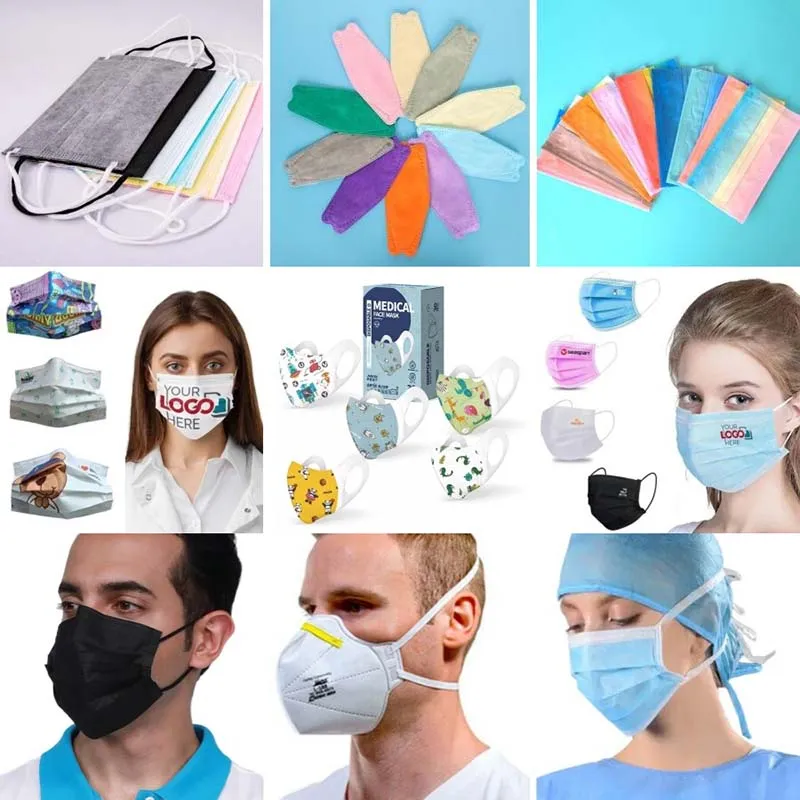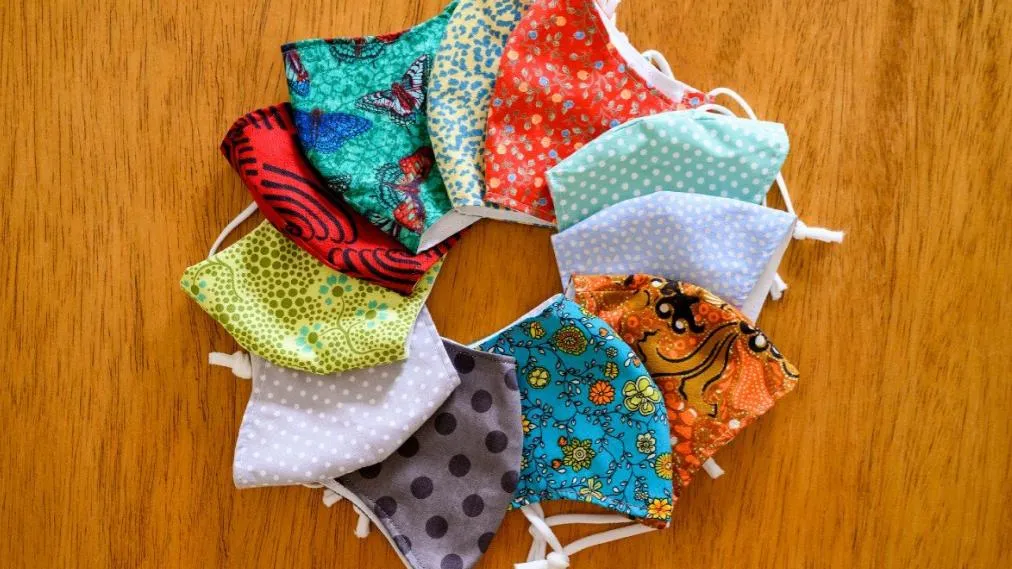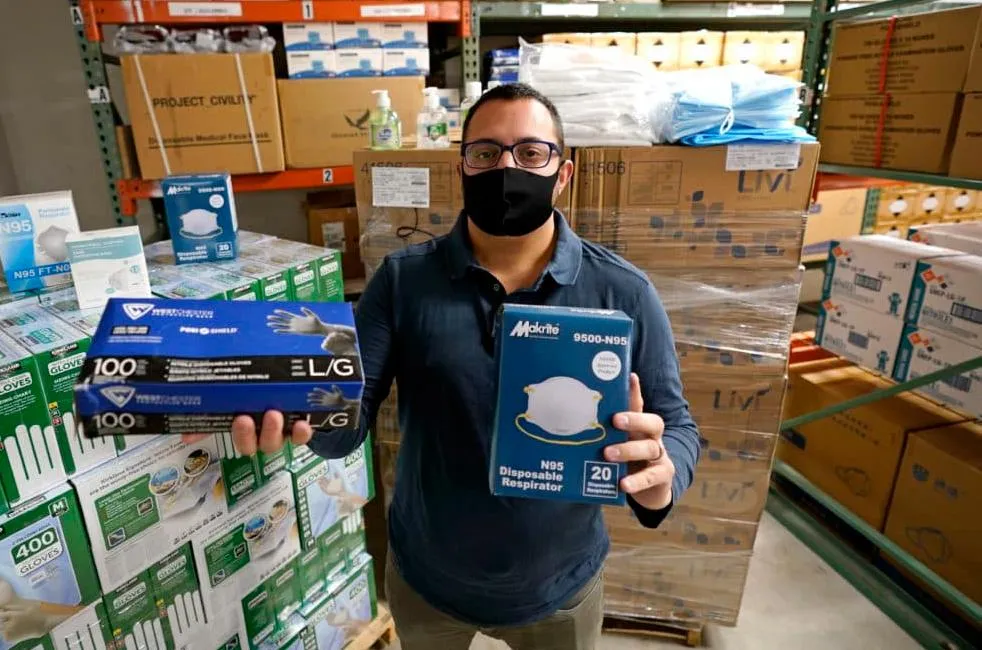I often get asked, “Do face masks expire?” The answer is yes. All face masks have a lifespan, and using one past its prime can reduce protection. Different masks, like surgical, N95, or cloth masks, age differently. From my experience, knowing how to check, store, and replace your mask can save your health. In this guide, I’ll share what I’ve learned from real-life use, research, and testing. You’ll learn how to tell if a mask is safe, when to replace it, and how to make your masks last longer, all in simple steps you can follow.
Do Face Masks Expire?
Yes, face masks have a lifespan. It really depends on the type of mask you’re using. I think it’s important to know how long each kind works and what signs mean you need a new one.
Shelf Life by Mask Type
1. Surgical Masks:
I’ve found that these surgical masks are usually single-use. The box should have a shelf life or expiration date from the maker.
The FDA and CDC agree that you should throw away surgical masks if the material breaks down, has tears, or is hard to breathe through.
From my experience, signs of an expired mask are broken straps or visible wear. This means you’re getting less protection.
2. N95 Masks:
Most N95 masks have a shelf life of 3–5 years. The disposable mask manufacturer determines this through tests on filtration, fit, and strap strength.
The CDC and NIOSH say some models might still filter well after expiring if you store them the right way. But the fit and strap quality can weaken.
For example, models like the 3M 1860, 3M 8210, Gerson 1730, and Moldex 1512 were tested for longer use when stored properly.
In my experience, expired N95s can have issues. I’ve seen some test batches with a 25% strap breakage rate, even with a working filter. I always recommend checking the strap strength, nose piece fit, and for any dirt before using one.
3. Cloth Masks:
Cloth masks don’t have an official expiration date. I think you can keep reusing them as long as the fabric and shape are good.
The CDC suggests you check your mask after every wash. I recommend you toss your cloth mask if you see thin spots, holes, if it’s lost its shape, or if it’s hard to breathe in.
Based on what I’ve seen, most cloth masks hold up for about 20–30 washes. After that, their protection level may start to drop.
Mask Longevity At a Glance
| Mask Type | Typical Shelf Life | Key Expiry Indicators | What Happens When Expired |
|---|---|---|---|
| Surgical | 2–5 years | Tears, degraded elastics, and hard to breathe | Lower filtration, poor fit, material failure |
| N95 | 3–5 years (by label) | Brittle straps, failed nose bridge, visible wear | The filter may work, but you risk a bad fit or broken straps. |
| Cloth | N/A (by wear/tears) | Thinning, holes, misshapen, soiled | Reduced barrier, higher chance of leakage |
My best advice is to play it safe. If you see a strap breaking, the mask feels uncomfortable, or it looks dirty or worn out, just get rid of it.
How Materials and Storage Affect Your Face Mask’s Lifespan?
The material of your face mask and where you store it are very important. These two things decide how long the mask will work well and be safe. From my experience, different materials break down in their own ways, which affects the mask’s fit and its ability to filter particles.
Material Differences Matter
Non-woven polypropylene is what you’ll find in most surgical and N95 masks. This material is quite stable if you store it well. A study of 3,971 expired N95 masks found that about 98% still worked. The key was keeping them in original packaging, away from heat and moisture.
In my opinion, cotton and synthetic fabric face masks are damaged easily by a lot of washing and wear. Masks made from thin cotton or paper lose their strength. They will also shed more fibers after you wash them a few times.
Pay attention to the straps. Synthetic rubber or polyisoprene straps can get brittle and lose their stretch. This often happens after being exposed to high heat or humidity. This causes a poor fit, which I think is a bigger problem than a small drop in filtration.
The Importance of Proper Storage
I recommend storing masks between 15–32°C and 20–80% humidity. Some N95 models kept their filtering ability for up to 10 years under these conditions. In one test, 19 out of 21 N95 types still performed well long after their expiration date.
Sunlight, heat, and moisture will ruin a mask’s fit and filtering ability. The straps often show damage first, but the main part of the face mask can suffer too.
I suggest you never store masks in places where the temperature goes above 32°C or where the humidity stays high.
Usage and Cleaning Impacts
For your reusable cloth masks, please know that every wash weakens the fabric. A hot-water machine wash is particularly hard on them. Studies show that washed homemade masks, when rubbed, release more particles than new masks. This tells me the fabric is breaking down and not protecting as well.
When you use surgical and N95 face masks repeatedly, the headstraps can stretch out. The nose bridge might also bend out of shape. This creates a poor seal on your face, even if the filter material is still effective.
How do I Check My Face Mask for Safety?
To feel confident that my face mask gives me real protection, I check its condition before every use. Based on my experience, here is a simple guide to help you do the same:
1. Physical Condition Inspection
Check for visible damage: I look for any cracks, tears, or holes in the main part of the face mask.
Shape and fit: I make sure the face mask isn’t bent out of shape. The part touching my skin, like the rubber edges, needs to be smooth and free of damage.
Strap integrity: I check the head straps. They need to be in one piece with no tears. They should not be stretched out and should still feel elastic. If the straps are loose, I know the mask won’t create a good seal.
Surface appearance: I look for any color changes or clear signs of wear. I find these often mean the material is getting old.
2. Label and Manufacturing Date
Find the manufacturing and expiration dates on the face mask or its package. I’ve learned most masks are safe for three to five years if you store them unopened and in the right way.
Filter shelf life: I keep in mind that some respirator filters last for about one year. If I see the filter is dirty or it gets hard to breathe, I replace it sooner.
Post-expiration risks: I believe using a face mask past its expiration date is risky. Its materials can break down, and it won’t protect you as well.
3. Visible and Functional Signs of Expiration
Valve condition: If my face mask has valves for breathing, I check for any bends, cracks, or creases. If a valve is missing, I won’t use the mask.
Strap issues: If the straps are loose or stretched out, they won’t hold the mask tight to my face. I consider the mask unsafe at that point.
Plastic part inspection: I inspect all hard plastic pieces. I look for cracks or stress marks on things like buckles and filter ports.
Dirt and moisture: If any part of my mask is dirty, wet, or just won’t get clean, I replace it right away.
Breathability: If I find it hard to breathe, even after a cleaning, it’s a red flag. The filter might be clogged or worn out. This tells me it’s time for a new mask.
Checking Your Face Mask Before Use
- The facepiece has no cracks, holes, or tears.
- The mask keeps its original shape.
- Head straps are strong and elastic.
- (For full-face masks)The lenses are not cracked or loose.
- All valves are in place, seated correctly, and not pinched.
- Filter cartridges are clean, whole, and the right type for my needs.
- All parts are within the use-by date on the label.
- I make sure the whole mask is dry, clean, and put together following the maker’s directions.
Common Face Mask Expiry Myths (and the Real Facts)
I’ve heard many ideas about when face masks expire. From my experience, a lot of these beliefs are just myths. Knowing the real facts helps you make sure your mask still gives you the protection you need.
Myth: Cloth Masks Never Expire
The idea that cloth masks last forever is incorrect. While they don’t have a printed expiration date, their filtering ability and fit get worse over time. This happens with repeated washing and daily wear. Studies show the filtering power of most fabrics drops a lot after 30–40 wash cycles. When straps stretch or the fabric thins, gaps can form. A mask with gaps may not protect you well. I recommend replacing your cloth mask when it feels loose or you see any visible damage, just as the CDC suggests.
Myth: N95/KN95 Respirators Last Forever
It is false to think N95 or KN95 masks are good for life. The manufacturer tests these face masks and gives them a shelf life. This is usually 3 to 5 years from the production date if you keep the package sealed and store it in a good place. After this date, its filtering can fail. The elastic bands can become weak, and the nose wires may not hold their shape. An expired mask might look fine, but it may not seal to your face. Based on real-world tests and CDC guidance, old N95s offer little or no protection. There is a high risk of the bands snapping or the nose piece failing.
Myth: Washing or Disinfecting “Renews” Masks
I have seen people believe that washing a face mask makes it new again. This is only true in a limited way and just for cloth masks. You should never wash or use cleaning agents on disposable N95 and KN95 masks. Doing so can break down the filter layer that captures tiny particles. This makes the mask less effective, even if it looks clean. Cloth masks do need regular washing. But with each wash, the fibers weaken, and the mask can shrink or lose its shape. I suggest you check the fit and fabric often. If your mask gets loose or shows wear, it’s time to replace it.
Disposable vs. Reusable Face Masks: How to Replace and Reuse Them
I believe it’s important to know the difference between disposable and reusable face masks. This helps you stay protected and makes wearing one more practical. I’ll explain each type, when you should replace them, and how to use them correctly.
Disposable Masks
For single use only: I recommend these for one-time wear. Their strong filter offers great protection. They are also convenient for high-risk places like clinics or busy areas.
Replacement guidance:
I suggest you replace it after each use. You should also replace it if it gets moist, dirty, or damaged.
Never try to clean or reuse them. From my experience, doing this weakens the mask’s filter. This puts you at a higher risk of getting sick.
Key facts :
- These face masks offer an Assigned Protection Factor (APF) of 20. They should create a tight seal for up to one hour. I find that their effectiveness really depends on getting the fit right.
- A big downside is the environmental impact. The manufacturing process and throwing them away incorrectly create a lot of waste.
Example: I’ve seen in healthcare that a new mask is needed after seeing each patient. You also need a new one if it gets contaminated in any way.
Reusable Masks
Materials and usage: These are made from washable fabrics like cotton or synthetics. You can clean and reuse them. I like that this makes them better for the environment and my wallet if I follow the instructions.
Washing and reuse guidance :
Wash after every use with hot water and detergent.
If you wear it for a short time, like a quick errand, you can reuse it. I recommend doing this only if the mask is still dry and not damaged.
Based on my experience, synthetic masks last for about 10–20 uses. After that, I suggest you replace them. Their lifespan depends on how well you care for them and if they show any wear.
You must wash cotton masks after every single use. I recommend you look for thinning fabric layers. This is a sign that the mask is not filtering as well.
Safe practices :
Remove by ear loops or straps, not the front.
Store clean face masks in a breathable bag (like a paper or mesh bag) until you wear them again.
I suggest you only reuse a mask when it is completely dry. A damp mask can become a breeding ground for germs.
Discard if you notice holes, frayed straps, thin spots, or a poor fit.
Key facts :
- In my opinion, synthetic reusable masks are a better choice for the environment than disposable or cotton masks. This is true if you reuse them at least 10–20 times and wash them in full laundry loads.
- Some masks have advanced carbon filters. These can block up to 99.4% of things like pollen, dust, and smoke. You just have to maintain them correctly.
Example: If I used a cloth mask for my commute, I would wash it each day. A synthetic 3-ply face mask can be just as good as a surgical mask for daily use. I would make sure to clean it and check it for wear.
No New Mask? Here Are My Tips for Safe and Green Alternatives
If you can’t find a new, unexpired face mask, don’t worry. You have other ways to stay protected. I’ll share how I choose safe options for different risk levels. I’ll also give you my advice on reducing waste with green choices.
My Recommendations for Certified Masks
For the best protection, I always suggest using a new, unexpired face mask or a certified alternative.
In high-risk places like hospitals or clinics, you need a new mask. I recommend using N95, surgical, or ASTM-rated types that are not past their expiration date. You should never use an expired mask in these settings.
In low-risk, non-medical situations, you could use an expired mask for a short time. Before you do, I suggest you inspect it for damage, bad smells, or a poor fit. I would not recommend this for any healthcare setting.
NIOSH-Approved Respirators
I find that certified respirators like the N99, N100, R95, R99, R100, P95, P99, and P100 give great protection. All are NIOSH-approved. In my experience, they work as well as or even better than N95s. OSHA agrees these are good choices. I always check for the
NIOSH
certification mark and read the manufacturer’s guide.
Based on my experience, Elastomeric respirators and PAPRs (Powered Air-Purifying Respirators) are great for work. Just make sure they meet the required safety standards.
My Advice on DIY Cloth Masks for Low-Risk Areas
If you can’t find a medical mask, I think a DIY cloth or cotton mask works for low-risk community settings.
I suggest using several layers of a thick, dense fabric. More layers offer better protection.
Make sure your mask fits snugly with no gaps. Any gaps will reduce its effectiveness.
I recommend washing the mask in hot water after each use. Let it air dry until it is fully dry.
From my experience, a DIY mask does not filter like an N95 or surgical mask. It is not safe for high-risk medical areas.
Green and Recyclable Mask Options I Like
Most single-use masks are made from a plastic called polypropylene. This material can sit in landfills for hundreds of years.
To help the environment, I suggest looking into biodegradable masks. These are often made from bamboo, organic cotton, or hemp.
I also recommend looking for recycling programs for used masks. Some programs turn them into energy or new plastic. Check your local rules first. Never toss used medical masks in your home recycling bin.
I like using reusable masks that have replaceable filters. If you follow the filter-change guide from the maker, you can cut down on a lot of waste.
Summary
In short, all face masks have a lifespan, and using one past its prime can reduce protection. Surgical, N95, and cloth masks each age differently, so checking straps, fit, and filter integrity is key. Proper storage, careful cleaning, and timely replacement keep you safe while extending mask life. For daily use or high-risk situations, always choose certified masks and inspect them regularly. If you need custom disposable face masks, feel free to contact us for a quote—we’ll provide high-quality, tailored options to suit your needs.




